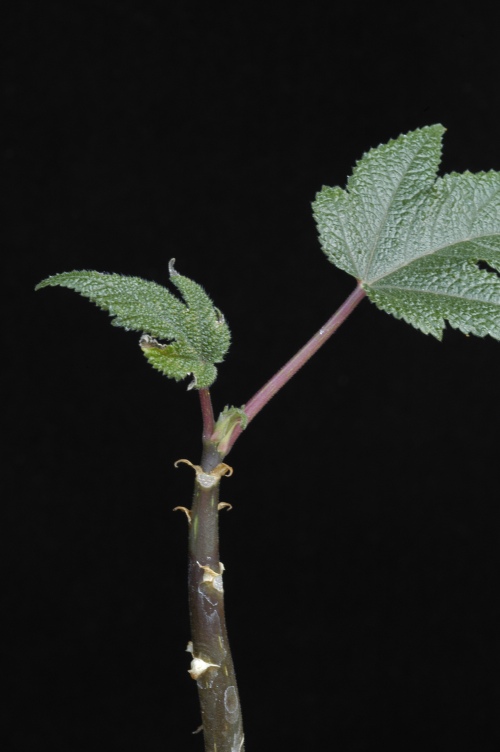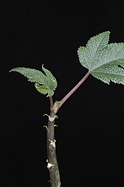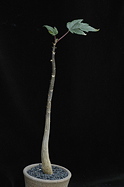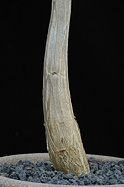This pachycaulous succulent is one of the more benign members of the stinging nettle family (Urticaceae). I have only managed to find with the back of my hand one or two of the stinging hairs rarely produced on the underside of the leaf petiole. The elegant, dark-green leaves are palmately lobed and have a rugose surface, while the gracefully tapered trunks have an attractively patterned bark. The species is endemic to Réunion Island, near Madagascar, and comes in two forms—the southern form offered here has larger leaves and is nearly devoid of stinging hairs. According to Clément Duret of the Jardin Botanique in Réunion, the species is critically endangered; fewer than 250 mature individuals are estimated to survive (with no subpopulation containing more than 50). See Bradleya 22:43-52, 2004. Among the significant threats to its survival are urban and agricultural encroachment, the introduced African snail, Achatina fulica, which displays a preference for seedling obetias over other food plants, and competition from invasive exotics. A consequence of the endangered status of O. ficifolia is the even greater rarity of Salamis augustina (see Salamis augustina augustina Boisduval, 1833), a butterfly for which O. ficifolia is the only larval food source. We offer seedlings of HBG 72906, a plant whose precise origin is uncertain but apparently the form from southern Réunion Island where the species grows in association with Delosperma napiforme (ISI 2005-17). $7.50.

Published in the Cactus and Succulent Journal, Vol. 79 (2), March - April, 2007


